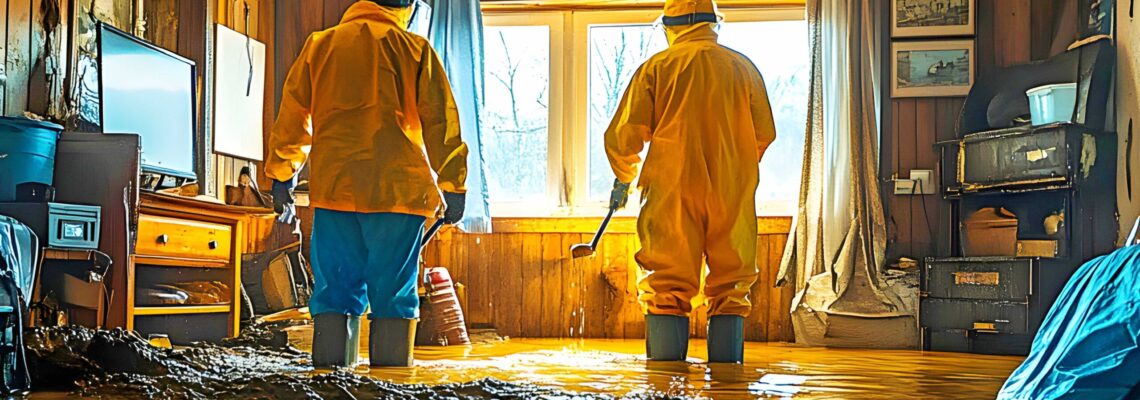As winter thaws and spring rains begin to fall, many homeowners find themselves dealing with an unfortunate and unpleasant issue: a sewer backup in their home.
The combination of heavy rainfall, thawing ground, and increased water table levels can quickly overwhelm municipal sewer systems.
When the storm system can’t handle all the excess water, it often finds the path of least resistance—sometimes right back into your home.
Let’s learn more about how to prevent a Spring sewer backup in your house in Springfield Missouri so you can avoid significant property damage, costly repairs, and serious health risks from contaminated water.
Recognizing the Warning Signs of a Sewer Backup
Catching a sewer backup before it happens can minimize damage and protect your property. There are several telltale signs that a backup may be occurring.
One of the most common indicators is water draining slowly from sinks, bathtubs, or showers. If multiple areas are impacted, it could be your main sewer line.
You might also hear gurgling noises coming from the drains or notice an unpleasant odor seeping up from them.
In some cases, water may even back up from the floor drain in your basement or lower levels.
If you notice any of these signs, especially during or after a heavy spring rain, it’s important to act quickly and reach out to a plumbing professional.
Taking Steps to Prevent Sewer Backups in Your House
While you can’t control the weather, there are several proactive measures you can take to reduce the risk of a sewer backup in your home.
One of the most effective solutions is installing a backwater valve, which helps prevent sewage from flowing back into your home during heavy rain.
Regular inspections and professional cleanings of your sewer line by a plumbing professional—especially before the spring season—can also go a long way in preventing problems.
Being mindful about what goes down your drains is another key preventative step. Avoid pouring grease, oils, or food waste down the kitchen sink, and never flush items like wipes or paper towels that can clog your sewer line.
Proper landscaping and grading around your home can also help by directing water away from the foundation.
Additionally, make sure your sump pump and any drainage systems are in good working order and consider installing a battery backup system in case of power outages during storms.
What to Do If a Sewer Backup Happens In Your House
If you find yourself dealing with a sewer backup in your house, your first priority should be the safety of your family. Immediately stop using all water in the home to prevent further damage.
If water has entered your basement or crawl space, and if it’s safe to do so, shut off electricity to the affected areas to reduce the risk of electrocution.
Try to avoid contact with the contaminated water, as it can contain dangerous bacteria and pathogens.
Open windows and use fans to ventilate the space, and take photos of the damage for insurance documentation.
Remove any waterlogged or contaminated items that can’t be thoroughly cleaned and disinfected.
However, keep in mind that DIY cleanup may not be sufficient for larger backups or those involving black water.
Knowing When to Call the Water Damage Remediation Professionals
While it may be tempting to tackle the issue yourself, there are many situations where calling a water damage remediation professional is the safest and most effective course of action.
If the backup includes black water—or sewage—professional remediation is essential to safely clean and sanitize the area.
If more than one drain is affected or the issue seems to be coming from the main sewer line, it’s a strong indicator that you need expert help.
Professionals use specialized tools like cameras to inspect the sewer line, hydro-jetting equipment to clear stubborn clogs, and industrial-grade disinfectants to eliminate harmful contaminants.
They can also help prevent future issues by identifying potential weak spots in your plumbing system.
How Sewer Backup Remediation Is Handled by Experts
When a professional water damage remediation company is called in to handle a spring-related sewer backup, we bring not only experience but also advanced equipment.
You’ll want to working with a plumbing professional for a thorough assessment, using camera inspection to pinpoint the cause of the sewer backup in your house. If tree roots or debris are involved, hydro-jetting can be used to clear your main sewer line.
Once any blockages are cleared, our water damage remediation team can take over and the affected area is then cleaned, disinfected, and dried using industrial-strength tools designed to eliminate pathogens and moisture.
This helps prevent secondary problems like mold growth or structural damage. We will even assist with the insurance claims process to help you recover faster.
Why Hiring a Professional Water Damage Remediation Company Matters
Spring sewer backups can cause more than just a mess. They can threaten the health of your family, compromise the safety of your home, and result in long-term structural issues if not handled correctly.
That’s why it’s so important to hire a professional water damage remediation company if your sewer backs up.
Our professionals have the knowledge, tools, and protective equipment needed to respond quickly, clean thoroughly, and restore your property safely.
Attempting to handle the problem on your own can be risky, incomplete, and potentially more expensive in the long run.
With our experts on your side, you can have peace of mind knowing your home is in good hands—and that you’re prepared for whatever spring throws your way.
If you ever need water damage repair in your home after a sewer backup in your home, call the professionals at PuroClean Certified Restoration. We will make sure that any repair work is done right.


